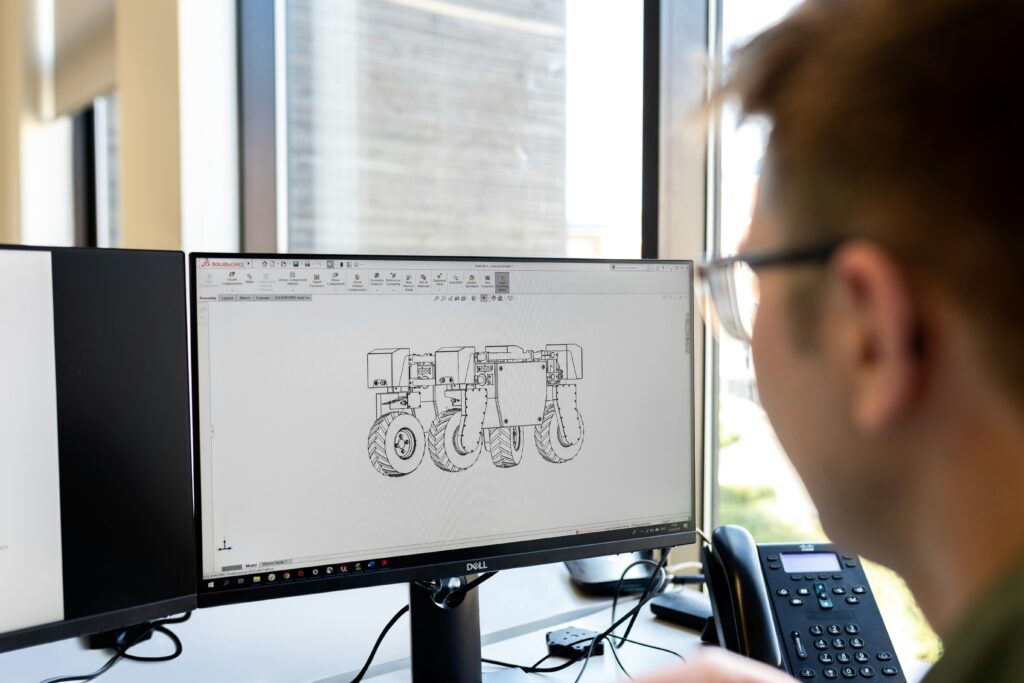The contemporary world is filled with unseen technologies, yet making our lives easier, safer and more efficient. Embedded software (one of the most important aspects of this technology world). It controls millions of devices – from home appliances and cars to medical equipment and industrial systems.

What Is Embedded Software?
Embedded software is application software that is created for a particular hardware platform. In contrast to common computer programs, it does very specific things and frequently operates in real time.
The most significant characteristics of the embedded software:
- Specific equipment focus. The programming is conducted with the properties of chips, sensors and controllers in mind.
- Restricted computing resources. In contrast to PCs or servers, embedded systems operate with restricted processor power and memory.
- High reliability and robustness. Embedded software has to be reliable even in hostile environments, such as medical devices or transport control systems.
- Autonomy. In most devices, there is no permanent network or remote connection.
Why Do Embedded Software Basics Matter?
With the development of IoT, autonomous devices and smart devices, an awareness of embedded programming basics is now becoming important for developers, engineers and companies. This is beneficial:
- Design more and better solutions.
- Make hardware perform better and last longer.
- Enhance the security and reliability of embedded systems.
Embedded innovation like Django vs React is the basis on which the future is constructed. In this article created with Celadonsoft, we will discuss the understanding where it is used, what issues occur when it is being developed and what software innovations propel the industry.
Applications Areas of Embedded Software
Embedded Software cannot be avoided in modern electronics and computerized systems. Unlike conventional software, it has close association with hardware, enabling precise control, reliability, and fast speeds. Embedded systems cover a wide range of industries today, transforming the world and consumers’ lifestyles.
Automation of Industry
Embedded systems are widely used in industry for the control of equipment as well as the production process:
- Control systems (SCADA, PLC) – control conveyor, machine, and robotic line operation.
- IoT sensors and controllers – real-time data collection and analysis streamlines production operations.
- Industrial system’s cybersecurity – solutions embedded in position protect critical infrastructure from cyber threats.
Automotive Sector
Cars are becoming smarter thanks to embedded systems:
- ADAS (Advanced Driver Assistance Systems) – intelligent driver assistance, like automatic emergency braking and adaptive cruise control.
- On-board information and entertainment systems – voice assistants, navigation and multimedia panels are dependent on in-built software.
- Electric and power management – battery control and energy recovery systems regulate charge use and extend battery life.
Medical Devices
Embedded software reliability and accuracy is critical for medical technology:
- Patient monitoring devices – heart rate, blood pressure, oxygen level are tracked by devices and transmitted to physicians in real time.
- Medical robots and surgical units – accurate robotic units, e.g., Da Vinci, allow complex procedures with little intervention.
- Implantable devices – insulin pumps and cardiopulmonaries use onboard algorithms to regulate the state of the patient autonomously.
Consumer Electronics
Almost all modern appliances and devices run on onboard systems:
- Smart TVs and smartwatches – low hardware resource-optimized operating systems are extremely energy efficient.
- Smart home and IoT devices – integrated solutions manage lighting, climate and security, and the household processes become automated.
- Game consoles and VR devices – high-performance integrated software allows you to implement smooth graphics and fast response to user input.
Emerging Problems of Embedded Systems Development
Embedded software (SW) development demands special strategy because of the nature of working with hardware platforms. Fixed resources, a demand for high reliability and real time render the process complicated and challenging. Reflect on the main problems engineers face while developing embedded systems.
Restricted Hardware Resources
Embedded systems, in contrast to ordinary computers, operate on microcontrollers and specialized processors with restricted memory, processing capacity and power consumption. This places stringent demands on:
- Code optimization. Programmers must write efficient algorithms, keeping memory and processor time usage to a minimum.
- Software succinctness. Every line of code must be warranted not to burden the system.
- Power consumption. Particularly crucial for battery-powered systems like portable electronics and IoT sensors.
Hardware and Software Compatibility
One of the main difficulties in developing embedded software is the need for close integration with the hardware. This is expressed in several aspects:
- Variety of platforms. Software should work on different microcontrollers and chips with different architectures.
- Drivers and low-level programming. Embedded software often requires writing your own drivers to interact with hardware.
- Hardware testing. Hardware component emulation is typically inadequate, hence the need to test with actual devices.
Meeting Real Time and Reliability
Some embedded systems operate in real-time systems, where milliseconds of delay would cause them to fail or crash. This applies particularly to:
- Car systems. The anti-lock braking system (ABS) or engine control system need to react instantly.
- Medical devices. Rescue devices like pacemakers must function flawlessly.
- Industrial controllers. In computerized production, timing mistakes may bring the entire line to a halt.
- Real-time operating systems (RTOS) like FreeRTOS, Zephyr and VxWorks are employed to resolve these issues, which offer task execution predictability.
Testing and Debugging
Embedded system debugging is one of the most challenging development phases. Principal technical challenges:
- Poor ability to print logs. Embedded devices seldom provide full-featured debugging interfaces, making it challenging to analyze errors.
- Hardware debugging is required. Low-level diagnostics are done using JTAG and SWD by the developers.
- Emulation and simulation. Modeling environments are employed in testing but they do not always mirror the real device’s work.

Modern Innovations in Embedded Software
Embedded software is evolving at a faster pace, addressing new technological challenges. Modern solutions are aimed at improving the efficiency, security and intelligence of embedded systems.
Artificial Intelligence and Machine Learning
AI and Machine Learning are starting to play a central role in data processing and decision-making in embedded systems. This is particularly relevant to:
- Autopilot cars, where image and sensor algorithms improve security and autonomy.
- Medical devices that translate biometric data in real time and aid doctors in diagnosis.
- Industrial IoT, where predictive analytics reduces equipment maintenance costs.
Internet of Things (IoT) Development
Internet of Things (IoT) devices require smarter and more adaptive embedded solutions that provide:
- Network connectivity. Use of MQTT, CoAP and Matter protocols for efficient data exchange.
- Cloud computing. Interoperability with cloud platforms (AWS IoT, Azure IoT) for managed device centralization.
- Energy efficiency. Optimization of the software and implementation of low-power microcontrollers in order to improve the autonomy of devices.
Open Source Software Implementation
Open systems such as Zephyr RTOS, FreeRTOS and Linux for embedded systems are the standard for the majority of developers because:
- Flexibility and customization.
- Lower licensing costs.
- Larger community of developers who provide fast fixes and new features.
Improvement of Development and Simulation Tools
Specialized software tools help to speed up development and testing of embedded software:
- Simulators and emulators (QEMU, Renode) allow one to test the software without real «hardware».
- High-level programming languages (Rust, Python for embedded systems) simplify development and offer stronger protection.
- CI/CD for embedded systems, which introduce DevOps into the process of firmware development.
Conclusion
Embedded software is not just a microcontroller instruction set, but the core of modern intelligent systems. It becomes more flexible, powerful and secure year after year, penetrating more and more markets – from transport and healthcare to intelligent cities and industrial automation.
Those companies like Celadonsoft that track trends, implement AI solutions, use IoT standards and provide high cybersecurity gain strategic advantages on the market. New technologies and creative ideas allow developing more reliable, self-sufficient and energy-efficient systems that will form embedded solution development in the future years.







